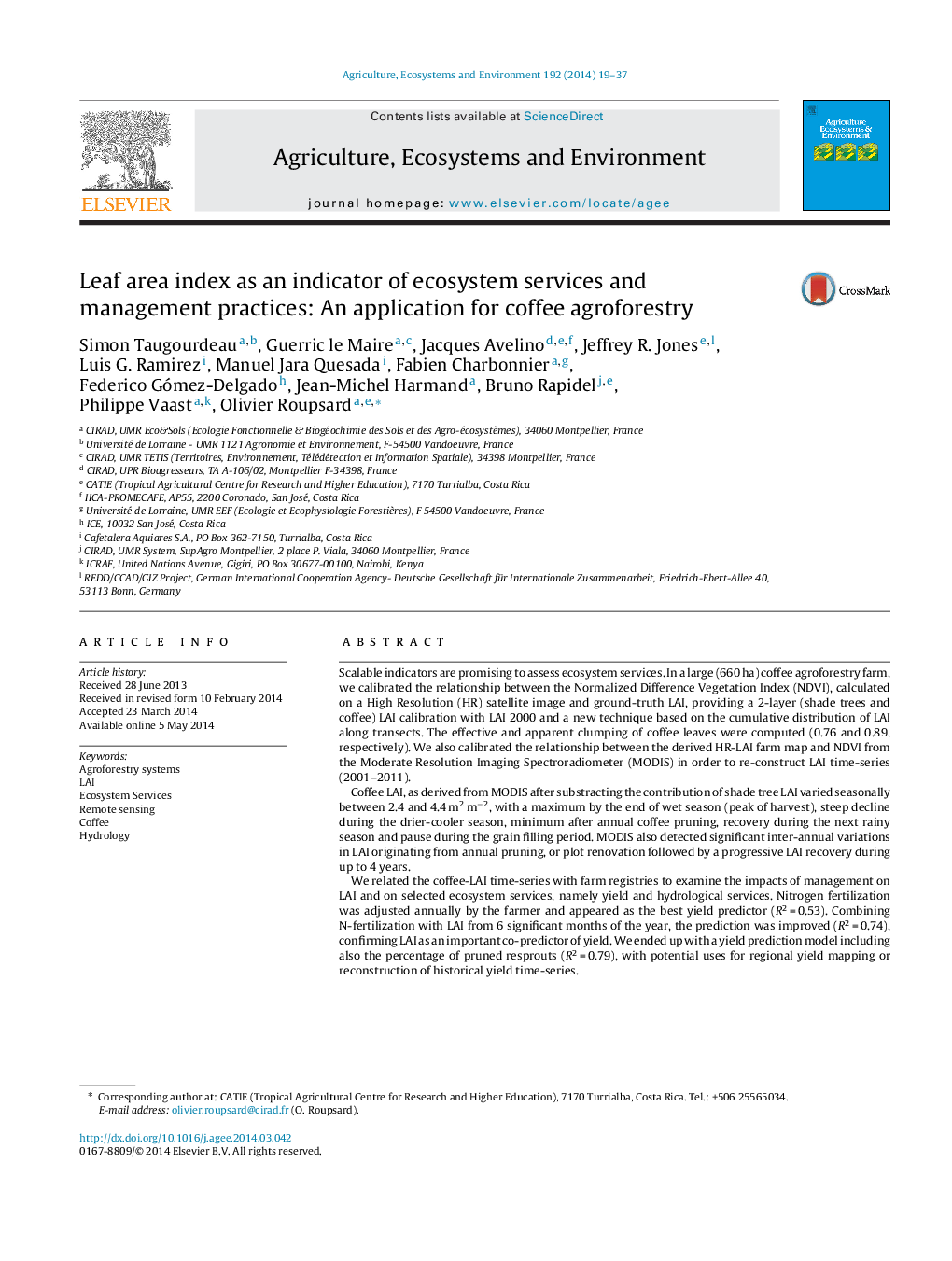| کد مقاله | کد نشریه | سال انتشار | مقاله انگلیسی | نسخه تمام متن |
|---|---|---|---|---|
| 2413933 | 1552060 | 2014 | 19 صفحه PDF | دانلود رایگان |
• LAI was split by layer in coffee agroforestry system and upscaled using remote sensing.
• Ten years dynamics of LAI were monitored and related to Ecosystem Services and Management.
• Yield was best predicted with N-fertilizer, LAI and percentage of pruning.
• LAI could significantly affect the partitioning between blue and green water.
• LAI is a promising scalable indicator of Ecosystem Services.
Scalable indicators are promising to assess ecosystem services. In a large (660 ha) coffee agroforestry farm, we calibrated the relationship between the Normalized Difference Vegetation Index (NDVI), calculated on a High Resolution (HR) satellite image and ground-truth LAI, providing a 2-layer (shade trees and coffee) LAI calibration with LAI 2000 and a new technique based on the cumulative distribution of LAI along transects. The effective and apparent clumping of coffee leaves were computed (0.76 and 0.89, respectively). We also calibrated the relationship between the derived HR-LAI farm map and NDVI from the Moderate Resolution Imaging Spectroradiometer (MODIS) in order to re-construct LAI time-series (2001–2011).Coffee LAI, as derived from MODIS after substracting the contribution of shade tree LAI varied seasonally between 2.4 and 4.4 m2 m−2, with a maximum by the end of wet season (peak of harvest), steep decline during the drier-cooler season, minimum after annual coffee pruning, recovery during the next rainy season and pause during the grain filling period. MODIS also detected significant inter-annual variations in LAI originating from annual pruning, or plot renovation followed by a progressive LAI recovery during up to 4 years.We related the coffee-LAI time-series with farm registries to examine the impacts of management on LAI and on selected ecosystem services, namely yield and hydrological services. Nitrogen fertilization was adjusted annually by the farmer and appeared as the best yield predictor (R2 = 0.53). Combining N-fertilization with LAI from 6 significant months of the year, the prediction was improved (R2 = 0.74), confirming LAI as an important co-predictor of yield. We ended up with a yield prediction model including also the percentage of pruned resprouts (R2 = 0.79), with potential uses for regional yield mapping or reconstruction of historical yield time-series.The impacts of varying LAI (from nil to double actual values) on hydrological services were simulated. LAI affected the partitioning between green water (evapotranspiration) and blue water (infiltration, aquifer recharge, streamflow), thus the water provisioning.We discussed how LAI was influenced by natural factors (phenology, interaction between vegetative and reproductive components, climate) and by management (pruning, renovation).We confirmed LAI as a powerful scalable indicator for several key ecosystem services.
Journal: Agriculture, Ecosystems & Environment - Volume 192, 1 July 2014, Pages 19–37
